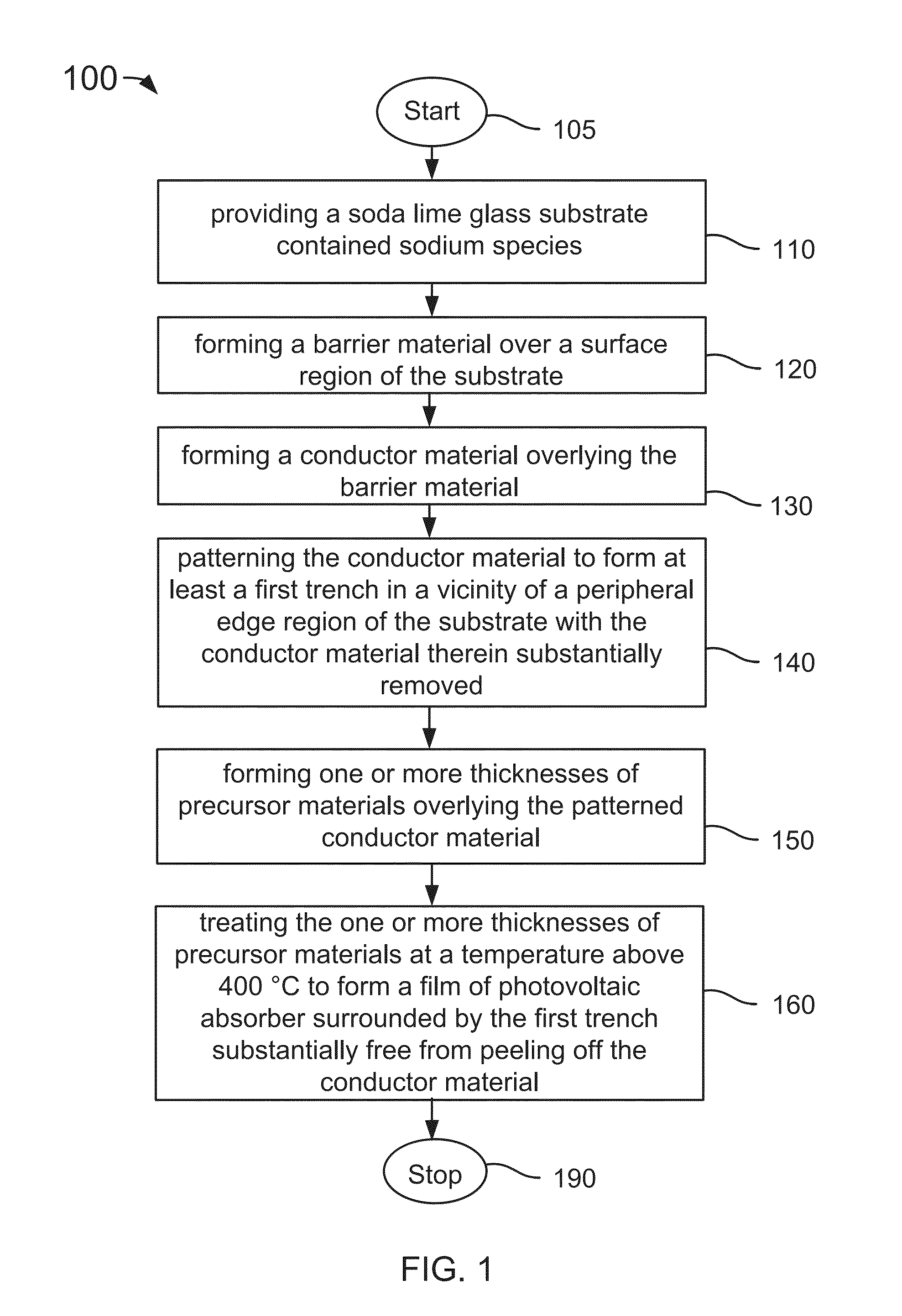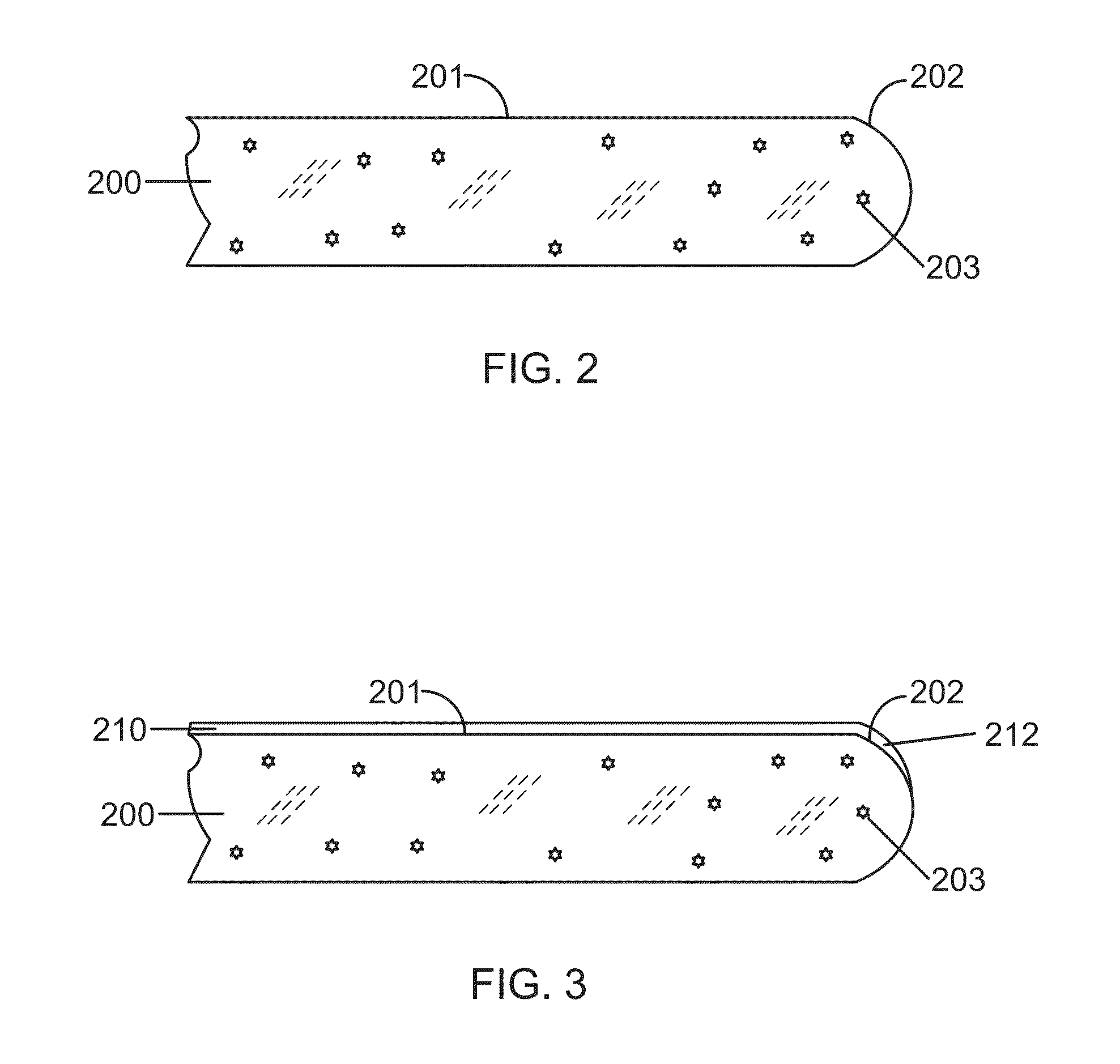Method and structure for eliminating edge peeling in thin-film photovoltaic absorber materials
a photovoltaic absorber and thin film technology, applied in the field of photovoltaic device manufacturing techniques, can solve the problems of film peeling and poor coverage, and achieve the effect of enhancing photovoltaic efficiency and avoiding thin film peeling
- Summary
- Abstract
- Description
- Claims
- Application Information
AI Technical Summary
Benefits of technology
Problems solved by technology
Method used
Image
Examples
Embodiment Construction
[0013]The present invention relates generally to techniques for the manufacture of photovoltaic devices. More particularly, the present invention provides a method and structure for eliminating peeling of a photovoltaic absorber film from the lower conductive material. Merely by way of examples, the present method includes patterning a conductive film to form a trench structure to isolate peripheral edge region for ensuring the thin-film photovoltaic absorber on main surface region substantially free from peeling off due to impurity from the edge region of the substrate, but it would be recognized that the invention may have other applications.
[0014]Out of various forms, flat glass panels have been widely used as substrates for the manufacture of thin-film photovoltaic modules. A rectangular shaped window glass often is a choice for making monolithic thin-film solar module for being installed on a building roof or being assembled into a solar-energy production system in large-scale ...
PUM
| Property | Measurement | Unit |
|---|---|---|
| temperatures | aaaaa | aaaaa |
| width | aaaaa | aaaaa |
| temperature | aaaaa | aaaaa |
Abstract
Description
Claims
Application Information
 Login to View More
Login to View More - R&D
- Intellectual Property
- Life Sciences
- Materials
- Tech Scout
- Unparalleled Data Quality
- Higher Quality Content
- 60% Fewer Hallucinations
Browse by: Latest US Patents, China's latest patents, Technical Efficacy Thesaurus, Application Domain, Technology Topic, Popular Technical Reports.
© 2025 PatSnap. All rights reserved.Legal|Privacy policy|Modern Slavery Act Transparency Statement|Sitemap|About US| Contact US: help@patsnap.com



